Starting a brand new coldwater aquarium or have one already set up? You may be thinking that aquarium plants simply can’t work without a heater…But you’d be wrong!
As it turns out there are quite a few coldwater aquarium plants that do well – or even better – in room temperature or colder tanks. So let’s discuss a few coldwater plants for your setup!
10 Best Coldwater Aquarium Plants
Here are 10 of our favorite coldwater aquarium plants in the hobby!
Java Moss
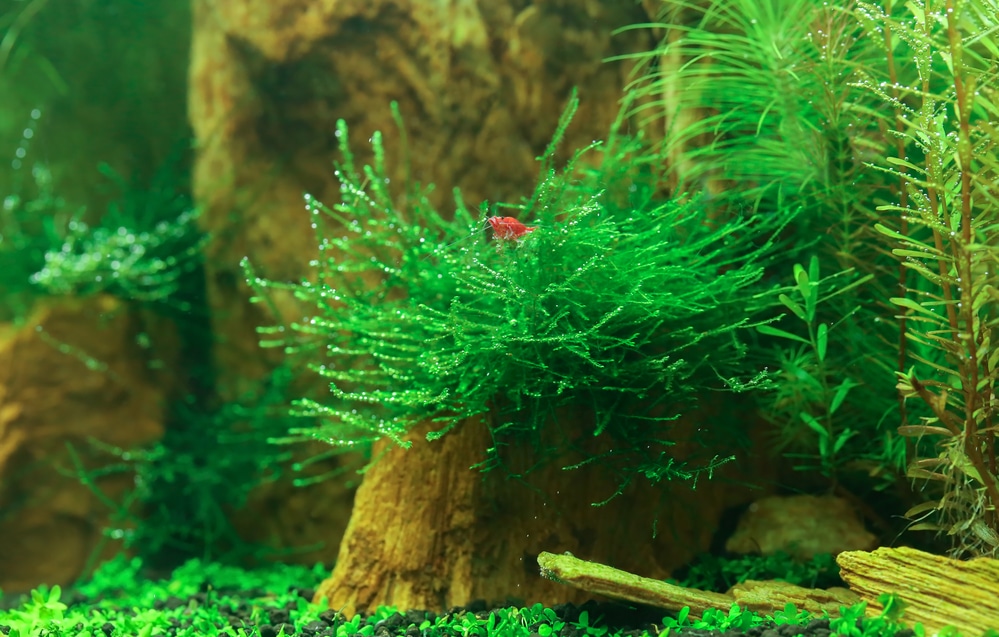
Moss aren’t the most popular aquarium plants. Slow growing and sensitive, they are usually grown only by specialists.
Java Moss is a rare exception, though! It grows quickly, needs only a little low light, and doesn’t even need fertilization or carbon dioxide. Java Moss comes from tropical Indonesia but it can grow in a wide range of conditions, including coldwater aquariums.
Java Moss is an epiphyte. This means it will attach to nearly any surface over time and spread. It does tend to form messy tangles so keep it trimmed and tidy with sharp scissors. Young fish fry and eggs are often laid there to allow them to mature without being easily found by other fish.
- Scientific Name: Vesicularia dubyana
- Origin: Indonesia
- Height: 4 inches
- Light Needs: Low
- Nutrition: Low
- Ease of Care: Very Easy
Anacharis
Inexpensive and fast growing, Anacharis is one of my favorite coldwater aquarium plants. The dense, bushy growth looks like seaweed and the dark green color fits right into any aquascape.
Anacharis has thin roots and is sometimes difficult to grow in gravel. It grows much easier as a rooted plant in sand – or it can be allowed to float freely. Free-floating, it can soak up all of the light and carbon dioxide it craves, but it will eventually shade plants below.
Goldfish bowls and tanks are often given a sprig of Anacharis for beauty. But be careful; Goldfish love eating certain plants and the soft, easily broken leaves of Anacharis are some of their favorites.
Their constant burrowing may also uproot your Anacharis unless you use plant weights to hold them down long enough for the roots to stabilize.
- Scientific Name: Elodea densa
- Origin: South America
- Height: Variable
- Light Needs: Moderate to High
- Nutrition: Low
- Ease of Care: Easy
Marimo Moss
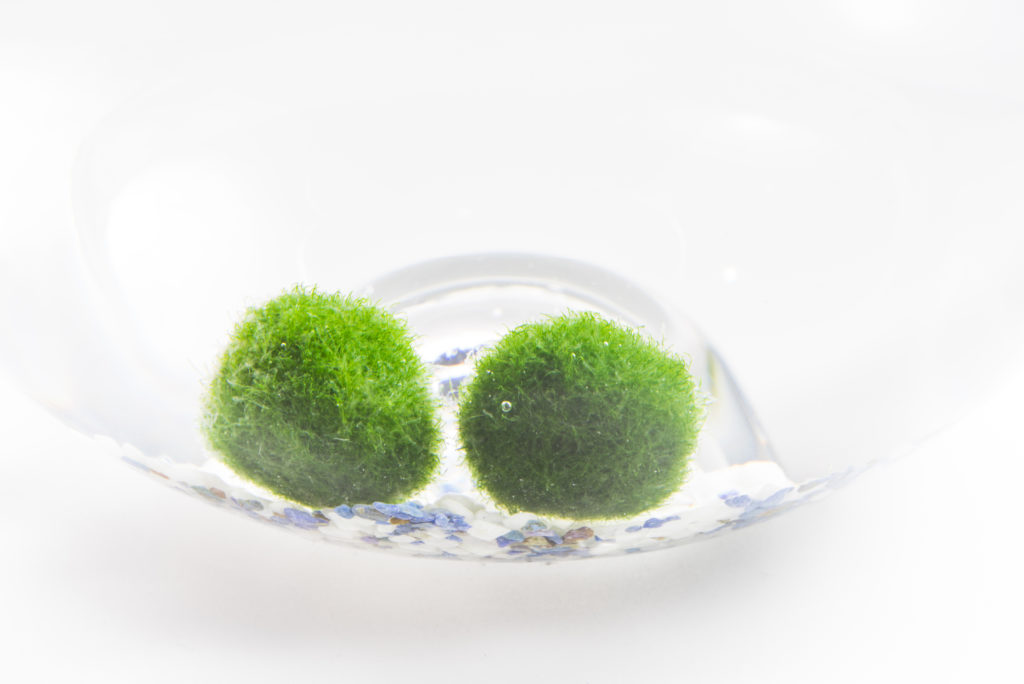
Most pet stores are carrying Marimo Moss balls now as they are fascinating and quite beautiful. Unfortunately, this strange plant is somewhat more difficult to grow than most people realize. But armed with a bit of knowledge, your Marimo Moss balls are sure to thrive.
In nature, Marimo Moss balls form near the bottom of ultrapure coldwater lakes. These lakes are extremely low in nutrients. Competing algae can’t smother them and the moss balls can roll along the bottom with slow cold currents.
However when placed into tropical aquariums their growth slows and eventually stalls out. The high nutrient loads of most aquariums are also an issue and the balls may fade or die entirely.
It’s best not to let the temperature get above 74℉, with colder always being better. In fact, the best way to revitalize a dying ball is to place it in the refrigerator for a few days.
- Scientific Name: Aegagropila linnaei
- Origin: Japan & Northern Europe
- Height: Up to 12 inches in diameter
- Light Needs: Low
- Nutrition: Very Low
- Ease of Care: Moderate
Crystalwort
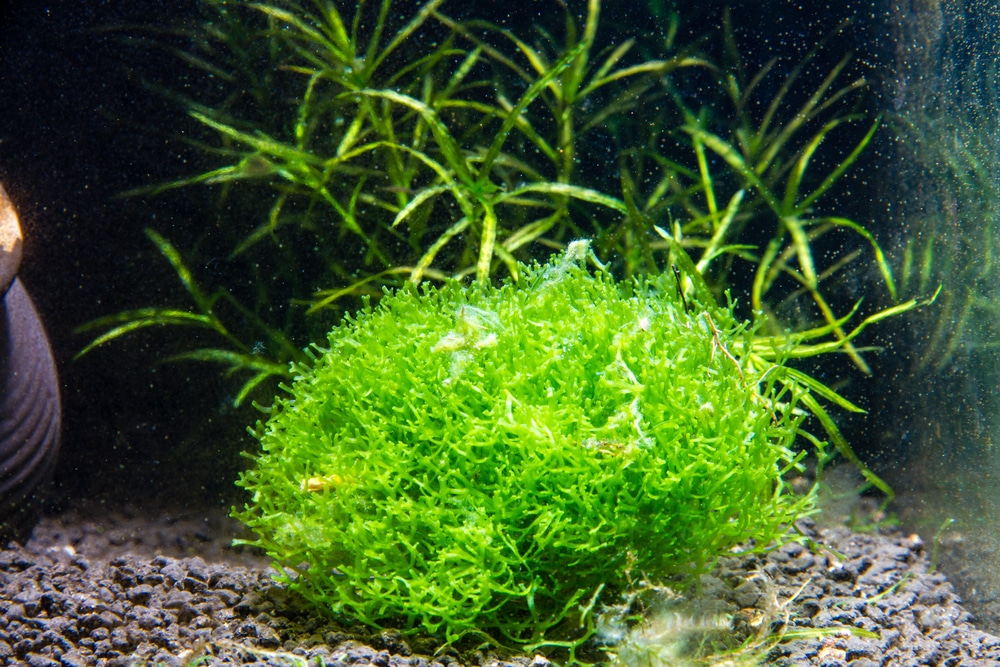
Also known simply as Riccia, this liverwort is an excellent coldwater aquarium plant that can either thrive with ease or be very difficult to grow. The reason for this is that Takashi Amano popularized the idea of carpeting Crystalwort in his Nature and Iwagumi-style aquascapes.
However, the plant won’t grow well in this way unless it gets loads of light and supplemental carbon dioxide. In nature, Crystalwort is a floating plant that gets all it needs from the surface. It can grow submerged but only if it’s well fed.
If you’re not looking to provide specialized lighting and supplemental carbon dioxide it’s better to grow Crystalwort as a coldwater aquarium plant.
It will eventually take over the surface in a light green branching cloud. But if you prefer a more challenging coldwater plant, try growing Riccia as a carpet instead!
- Scientific Name: Riccia fluitans
- Origin: Eurasia
- Height: Floating plant
- Light Needs: Very high
- Nutrition: Low
- Ease of Care: Easy to Difficult
Madagascar Lace Plant
There are few coldwater aquarium plants as well suited to being a show specimen as the Madagascar Lace Plant. Unlike many of its cousins in the genus Aponogeton, this is a true coldwater plant, preferring temperatures to stay around 65-75℉.
They actually have a summer resting phase; once the water temperatures get higher the plants drop their leaves and “hibernate” until things get cold again. This summer rest phase is a major reason why so many aquarists have trouble keeping this exotic plant; it doesn’t like tropical conditions year-round!
I recommend keeping them with delicate algae eaters like Amano Shrimp and Dwarf Otocinclus. Large Plecostomus and other algae eaters can easily damage the net-like leaf structure, killing the plant.
- Scientific Name: Aponogeton madagascarensis
- Origin: Madagascar
- Height: 20 inches
- Light Needs: Low to Moderate
- Nutrition: Moderate
- Ease of Care: Moderate to Difficult
Water Hyssop
Water Hyssop is a close cousin to Moneywort, an Indian aquarium plant with several medicinal qualities. Being from North America, Water Hyssop (or Lemon Bacopa) is used to a good winter and thrives in coldwater aquariums.
Bacopa as a group are some of the easiest stem plants to grow! They like additional carbon dioxide and fertilization but do okay without it. They do prefer at least moderate full-spectrum aquarium lighting, however.
If not given adequate lighting Water Hyssop will drop its lower leaves and stop spreading outwards, focusing all of its growth on the tips. This gives the plant a stringy, unattractive appearance.
- Scientific Name: Bacopa caroliniana
- Origin: North America
- Height: 12 inches
- Light Needs: Moderate
- Nutrition: Low to Moderate
- Ease of Care: Easy
Pygmy Chain Sword
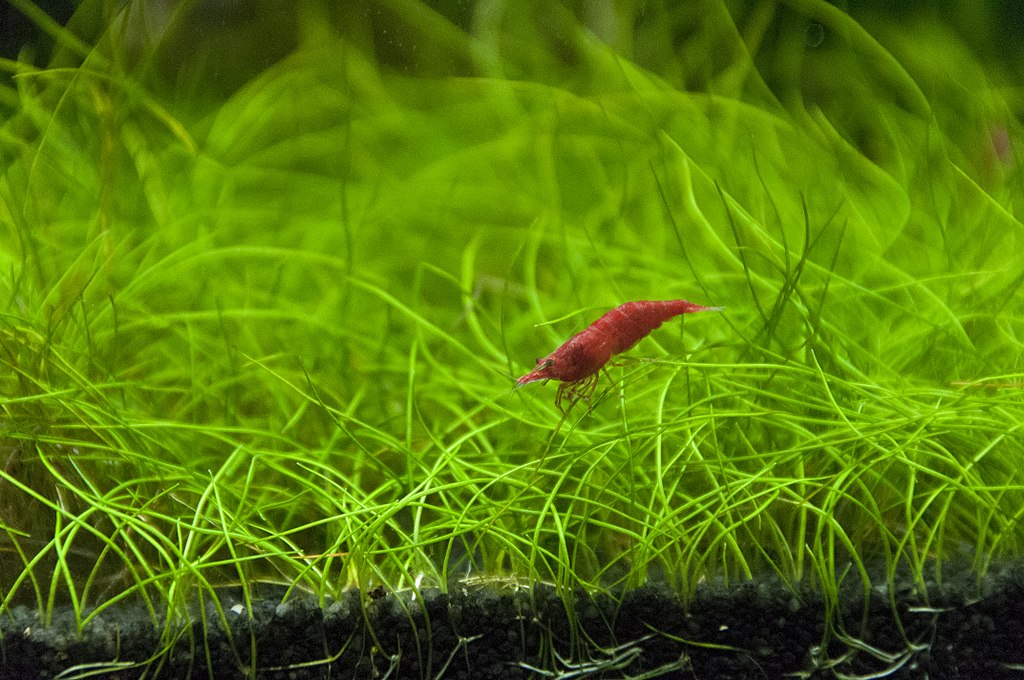
Pygmy Chain Swords are another North American native with a tropical cousin that’s more popular. Amazon Sword Plants are large, vibrant show plants that are popular especially with Discus and Angelfish keepers.
Amazon Swords are equatorial plants and need things nice and steamy at all times. But Pygmy Chain Swords are from the Southeastern United States and Mexico where winters can still get somewhat chilly. They otherwise look much like miniature Amazon Sword plants, with a somewhat bushier character.
Chain Swords get their name from how fast they send out runners to colonize the substrate. All Sword Plants reproduce in this way but Pygmy Chain Swords can cover an aquarium bottom in just a few months!
They are also heavy root feeders and appreciate a nutrient-rich substrate to fuel this rapid growth. Enriched substrates like ADA Aquasoil come pre-loaded with every nutrient plants need, making water fertilization mostly unnecessary!
- Scientific Name: Echinodorus tenellus
- Origin: North America
- Height: 4 inches
- Light Needs: Moderate
- Nutrition: High
- Ease of Care: Easy
Java Fern
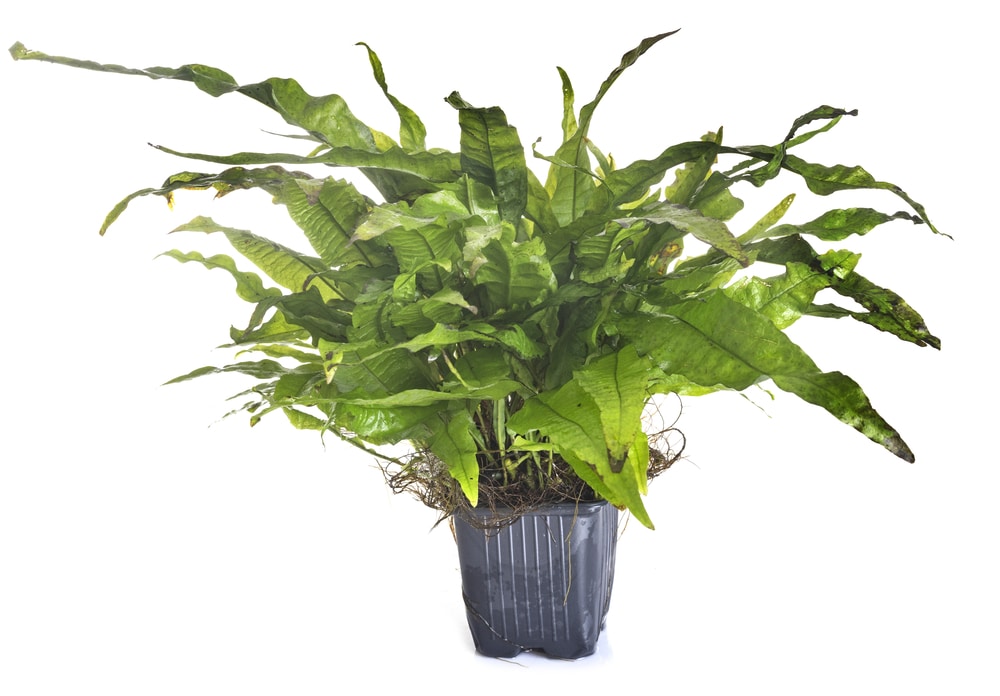
Java Fern really is an incredible aquarium plant because it’s so easy to grow! It thrives in all conditions; low light and high, it needs next to no nutrients, and even in coldwater environments. If you can’t grow Java Fern, there is likely something very wrong with your tank.
Bear in mind that while it is a set and forget kind of plant, the less you provide for it, the slower it will grow. If you give it little light, carbon dioxide, fertilizer, and keep things cold it will seem unchanged for months on end.
But if you simply want a little greenery to liven up a coldwater aquarium without having to care for it a great deal, Java Fern is a great choice! Plant-eating fish hate the taste, for one.
And as an epiphyte, it grows attached to rocks and driftwood. Simply tie it to where you want it to stay, wait a few weeks, and then undo the string or rubber bands!
- Scientific Name: Microsorum pteropus
- Origin: Indonesia
- Height: Up to 12 inches
- Light Needs: Very Low
- Nutrition: Very Low
- Ease of Care: Very Easy
Hornwort
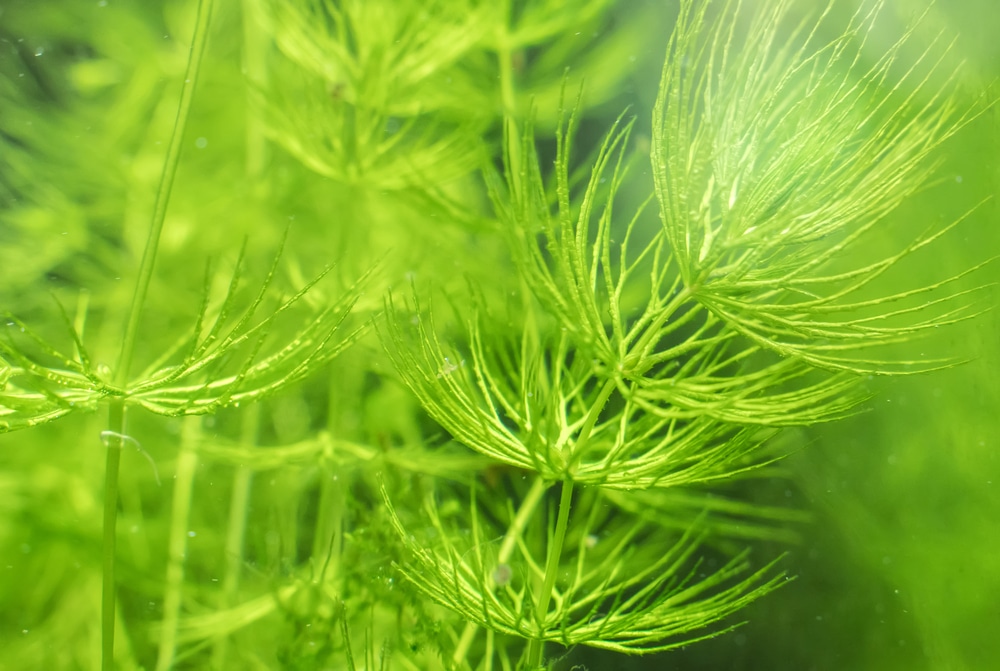
Hornwort is almost as easy as Java Fern to grow but much more unruly in character. Typically found in nutrient-rich ponds all over the world, Hornwort can grow extremely tall; up to 3 meters as it strains for the sun!
Once it reaches the surface it simply sprawls right across the surface, soaking in all of the light it can. This makes it rather invasive both in nature and in your aquarium. Few animals like eating Hornwort as well so you’ll need to trim it regularly.
This makes it one of the easiest stem plants to grow. It needs little in the way of carbon dioxide or fertilizer but definitely appreciates both!
- Scientific Name: Ceratophyllum demersum
- Origin: Worldwide
- Height: 3 meters
- Light Needs: Moderate to High
- Nutrition: Low
- Ease of Care: Very Easy
Ludwigia repens
Ludwigia repens is another popular North American native that’s an excellent coldwater aquarium plant. Being of medium height it’s best used as either a midground plant or a show plant in a nano aquascape.
Like most stem plants it does like a little more care than other aquarium plants. YOur lighting should be at least moderate but high lighting is best. Carbon dioxide and fertilization also go a long way to keeping Ludwigia growing tall and wide.
Wild Ludwigia is light green, taking on a faint red coloration at the growing tips or in bright lighting. Several man-made varieties are intensely red, however, making Ludwigia an excellent option if you’re looking for a bit of color diversity.
- Scientific Name: Ludwigia repens
- Origin: North America
- Height: 8-12 inches
- Light Needs: Moderate to High
- Nutrition: Moderate
- Ease of Care: Moderate

